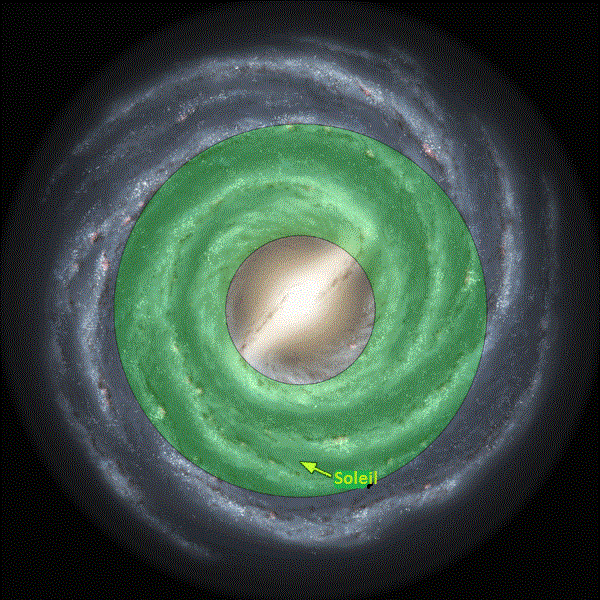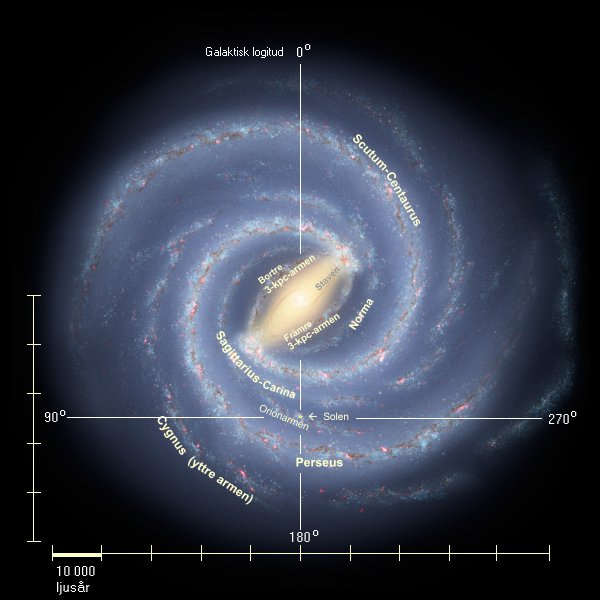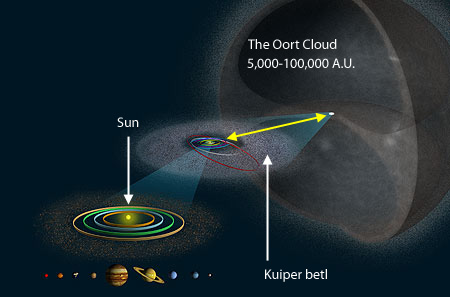By Cory Davis
This is a breakdown of John Gribbin’s argument as made in his book Alone in the Universe: Why Our Planet is Unique (2011) for why most of the Milky Way Galaxy is uninhabitable.

On December 19, 2020, I wrote a review of this book, giving it 4/5 stars. I thought it was a fun thought experiment which made me wonder and ponder our existence in the universe. If you are interested in checking it out, please find it here.
Later on I tried to summarize the author’s consicely into 12 premises and a conclusion for why we are alone in the Milky Way Galaxy as a technological civilization. If you are interested to check it out, please find it here. His argument first reduces the the amount of stars that could harbor life from 100% of the Milky Way to just 10%, based on metallicity and location. This blog post breaks down his argument for why.
Chapter two of Alone in the Universe is dedicated to explaining why the Milky Way is “special”. This chapter outlines why our galaxy is able to accommodate technological civilizations, whereas many galaxies in the universe cannot. This can simply be inferred by their metallicity content. However, even in our special galaxy, conditions are violent and often inhospitable to life, even in the most habitable regions.
Accumulating Heavy Elements in the Galaxy
Galaxies like the Milky Way formed within the first three to four billion years after the big bang. Through many generations of stars in the Milky Way, the content of heavy metals built up, accumulating to the point where it could form rocky planets. The process of building up heavy metals took billions of years leading up to the birth of our solar system. Therefore, it must have taken billions of years to develop conditions that allow for the evolution of life.

- 3-4 billion years after the big bang – galaxies like the Milky Way form
- 6-9 billion years after the big bang – the Milky Way develops enough heavy metals to sustain rocky planet formation. Our sun is born
- 13.2 billion years after the big bang – complex life begins to emerge on planet earth
It took our solar system around five billion years to produce complex life, followed by technological civilization. If this is a regular amount of time it would take to do that, then we could be one of the first in the Milky Way.
As noted in the “cosmic calendar” (see previous image), it was not until mid-May that the thin disk of the milky way formed. The development and accummulation of heavy metals occurred in the galaxy’s disc. This disc produces stars that make heavy elements essential for complex life, rocky planets and technology.
The disc is a feature of spiral arm galaxies. Most galaxies are not this type, and the Milky Way wont be one forever. The Milky Way may become elliptical, through a collision course with the Andromeda galaxy billions of years in the future.
So, how did heavy metals build up over time in the Milky Way’s disc? As noted above, it was through the succession of generations of star birth and death.
Larger stars than the sun [at the ends of their lives] will collapse creating heat and pressure fierce enough to fuse heavy elements like nickel and iron then blow a bunch of it away in clouds of dust. The biggest stars in the universe will create and disperse even heavier elements in supernovae explosions. John Gribbin highlights the importance of supernovae. He says that supernovae are what create the heavier elements like iron. When our sun dies, collapsing into a white dwarf, it will only be able to fuse together elements up to carbon and oxygen. Whereas more massive stars will collapse further and create materials required not only for rocky planet formation, but also for essential biochemical reactions.
Supernovae and time are required for technological civilization as the metallicity (or amount of metals) in stars increases over generations. However, too much metallicity could be a bad thing. Stars with higher metallicity, are more likely to have a large-Jupiter planet orbiting close to it. These large “Hot Jupiter’s” would orbit as close as earth is to our sun or even closer, which would disrupt orbits of earth-like planets close by.
The Galactic Habitable Zone
Currently, there is a narrow region within the Milky Way Galaxy that has enough metallicity to sustain rocky planet formation. This region accommodates 10% of all stars in the Milky Way. This is what some call the galactic habitable zone. The area is thin, short in width, not near the galactic centre, or the outer edge.

- The outer part of the galaxy consists of old stars that formed 10 billion years ago (twice the age of the sun) that don’t even have 10% the metallicity of ours. You likely need around 40% the metallicity of our sun to develop rocky planets.
- The galactic centre has a bulge around it that make up most of the stars in the galaxy. The bulk of the stars in the bulge are old and low in metal content. There are few younger stars in there. Because it is so dense and close to the centre, the radiation would be far too high to accommodate life, reducing the probability of life occurring even more. The number of encounters with other solar systems would also result in many more extinction level impacts.
- The galactic habitable zone is a thin disc in between the outer edge and inner bulge no more than 1000 light years thick. This area contains young stars like the sun. It is currently the only area within the milky way producing new stars and enriching it further with heavy metals.
The galactic habitable zone idea was put forward due to the link between metallicity and the likelihood of forming planets such as Earth, Mars, or Venus. However, it is not constant, expanding over time. Charles Lineweaver (Senior Fellow at the Planetary Science Institute, Australian National University) postulates that the galactic habitable zone emerged roughly 8 billion years ago from a ring roughly 26 thousand lightyears from the galactic centre. Now he postulates that it extends from about 23 thousand lightyears to 29 thousand lightyears from the centre.
However, the galactic habitable zone depends not only on metallicity, but also on the frequency of potential hazards that star systems would encounter when they travel around the Milky Way Galaxy. Supernovae and the supermassive black hole at the galactic centre are two of them:
- Supernovae are a hazard.
- Supernovae are more common in the galactic centre because it is more dense.
- They likely occur on average about once every 100 million years in our galaxy and could be devastating to life on earth even from across the Milky Way. The author says that it could be possible for a supernovae to even sterilize an entire galaxy – but it has been pointed out that they are very short-lived. So, the side of the planet facing away from it could be shielded from the more harmful effects although there will be setbacks, such as a large hole in the ozone.
- Supernovae were more common in the earlier galaxy, which could be a reason that intelligent life took so long to form on earth. So, it would be easier for intelligent life to form now by not having as many gamma ray burst events slowing things down.
- The supermassive black hole at the galactic centre is a hazard.
- Radiation hazards don’t just come from supernovae, but from the galactic centre itself where the supermassive black hole is located. Although it is not very active today, there are signs it was more active in the past.
- Active black holes studied in other galaxies show that when they swallow material (such as stars or gas clouds), it gets sucked in at an extremely high speed and results in intense radiation shooting into the bulge. Unfortunately, stars in the bulge tend to have elliptical orbits around the black hole, so they end up coming very close to the centre. Either way, any planet bombarded with this kind of radiation will suffer immensely.
Most of the galaxy is thus uninhabitable. Only the thin disc has the metallicity required to sustain the evolution of technological life. However, the galactic habitable zone is still a violent, life-threatening place to be.
The Galactic Habitable Zone is a Dangerous Place to Live
Passing Through the Galaxy’s Spiral Arms
The sun is located about 27,000 light years from the middle of the milky way, and takes roughly 225 million years to make a complete orbit. So, since the sun formed, it made about 20 complete orbital rotations around the centre of the galaxy. We are currently near the inner edge of a spiral arm called the Orion arm, or otherwise known as the Local Arm. The author notes that spiral arms are not permanent, that they get smoothed out over time – it just seems permanent since we are just a snapshot in time, as he puts it – “like snapshots of the spiral patterns of coffee”. But the bulge can also kick back up a spiral pattern, so they may come and go and set of a process of star formation in the arms when they do. This process is very good at mixing metals in the thin disk of the galaxy when it occurs. The spiral density waves, like the one that makes up the Orion or Local arm sent off from the bulge actually moves slower than the stars do. So, we are not just existing within the Local Arm, we are literally just about to pass through it.
Spiral arms are where supernova occur. If the solar system was impacted by one, it could destroy our ozone layer and cause serious harm to life on earth. If the solar system was within 30 light years of a supernova explosion, it would likely destroy most life on the surface. So, the likelihood of an extinction event caused by a nearby supernova explosion increases as we go through spiral arms. That is because more supernovas occur in them.
So, stars closer to the bulge would pass through more arms over time because they are closer together near the middle. We are further from the middle. So the risk of extinction by supernova or other hazards in the spiral arm decreases the further away from the centre you are located.
Last time the solar system passed a spiral arm was about 250 million years ago. The Palaeozoic era ended around 250 million years ago in a mass extinction. This could be related to the spiral arm encounter, or it could not be. But that is just another indicator that some regions in the milky way are more accommodating to life than others, and the probability of technological life developing or continuing to exist varies depending on where you are located in space and time.
Comets
The problem with comet impacts like the one that killed off the dinosaurs is that they could potentially sterilize a planet of all complex life. If the comet was larger than the one that killed the dinosaurs, it could have. But what if the comet was much smaller? The trajectory of evolution would be vastly different and we would likely not be here today to talk about it.
Where there are lots of comet-impacts, these extinction events would not provide enough time to evolve intelligent life.
We are surrounded by a massive Oort cloud around our solar system, presumably most star systems are. The Oort cloud is a halo of rocky and icy debris with trillions of pieces larger than one kilometer in diameter, and billions of pieces over 20 kilometers in diameter.
A close encounter with any large body like a solar system or black hole could perturb the Oort cloud sending them toward our sun, where earth is in its path.
- This will be much more common in the bulge where there is a higher density of solar systems
- This will also be more common in the spiral arms where the density of gas clouds would give the Oort cloud a “hydrostatic jump”
We are on a collision course with another solar system right now. The star Hipparcos 85605 will pass by our solar system very closely within the next 250 to 500 thousand years. The star Gliese 710 will pass by in approximately 1.3 million years. Both of these encounters will interact with our Oort Cloud, increasing the risk of impact with the earth.
Conclusion
We are not just located in a good spot in the milky way, we are in a good time as well. Life most probably occurs in the galactic habitable zone and becomes exceedingly less likely the further you travel out. So, for an intelligent civilization to colonize or explore the galaxy for life, they would only need to reach 10% of the stars. This makes that Fermi Paradox question more impactful. If we could practically send robots (like Von Neumann Probes) to explore the galaxy, it would take much less time to explore the the galactic habitable zone than the entire thing. So where are they?
This discussion has all been about the Milky Way, but what about other galaxies? About 80% of other galaxies are fainter, star birth and star death is occurring less frequently – so the process of increasing metallicity is weaker, possibly too weak for earth like planets. From observations, only about 20% of galaxies seem to have the metallicity required for rocky planet formation.
Final Thoughts
Do I agree with the author’s conclusion? Well, I can agree that the probability of complex life should decrease where the frequency of hazards increase. I also agree that the probability of complex life decreases the further away from the galactic habitable zone you are interested in. However, it accommodates 10% of the stars in the Milky Way. That still leaves between 10 – 40 billion stars to consider as potential systems to harbour life. However, the author easily shreds this down from 10% to 0.06% in his discussion about habitable star systems and types, a topic for a later post.
All in all, I am not necessarily conviced that we are alone in the Milky way, but found it to be persuasive, forcing me to think big and reflect about our place in the Milky Way Galaxy, or even the universe. I could agree that it is possible for us to be alone in the Milky Way as a technological civilization. However, I would not state is as fact. I am not convinced that we are alone as such in the universe, but would that even matter if we are spatially disconnected to the point where we could never make contact?
Thank you for reading this blog post. I had fun reviewing John Gribbin’s argument for the galactic habitable zone and why most of the galaxy is uninhabitable. However, I am more interested to hear your thoughts and opinions. If you have any thoughts, ideas, disagreements, or insights to the topic, please share them in the comment section below.
If you enjoyed this post, please give it a like, or subscribe. You can follow me @interestpeaks on Twitter too. Please stay tuned! I will return later to discuss John Gribbin’s argument why most stars systems and types are uninhabitable in the Milky Way galaxy.




